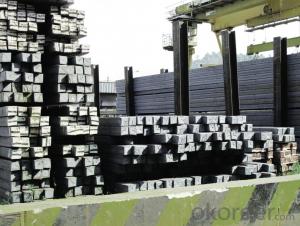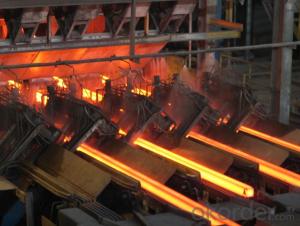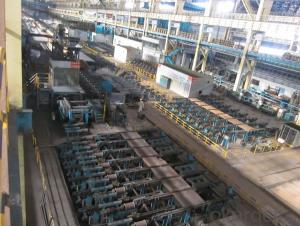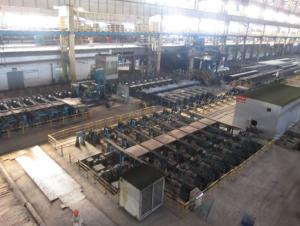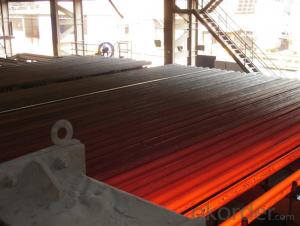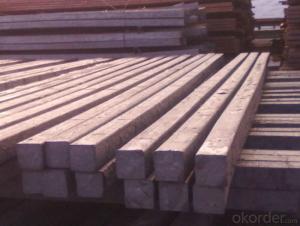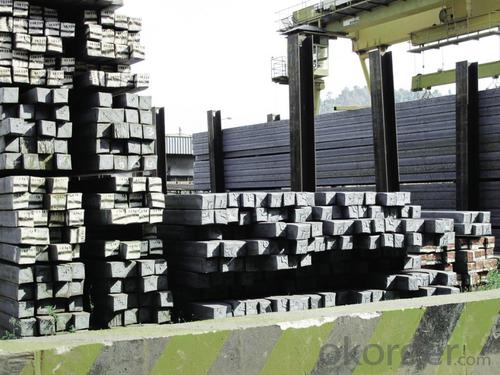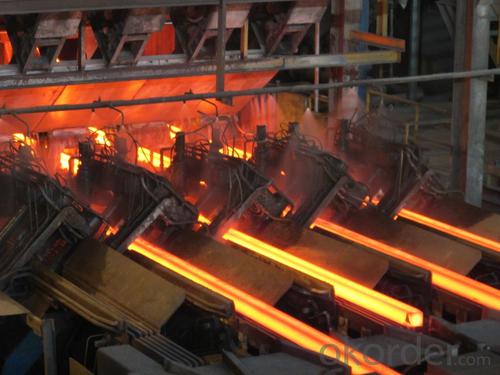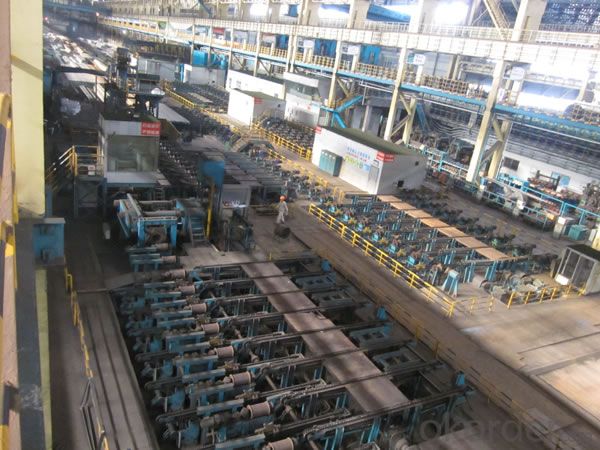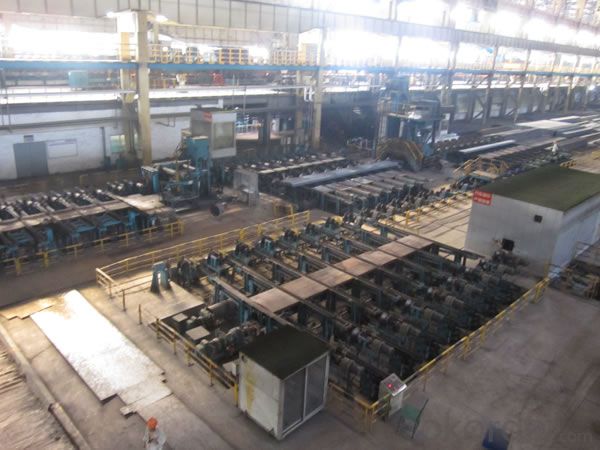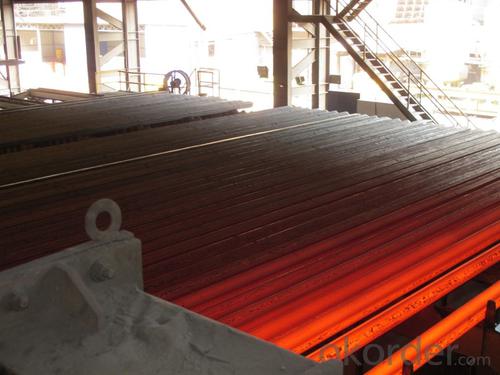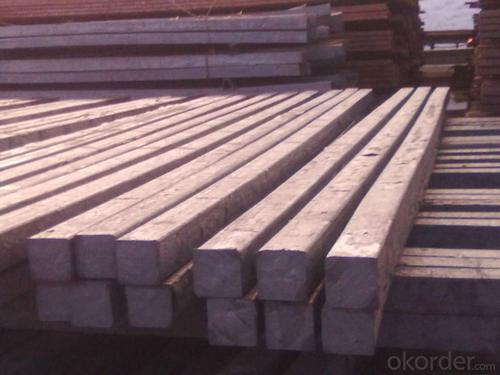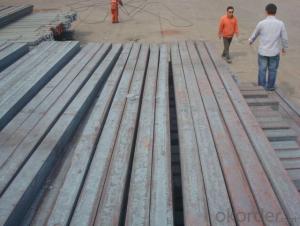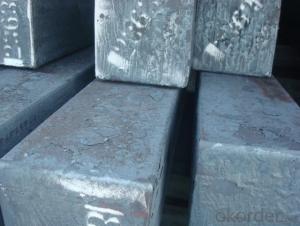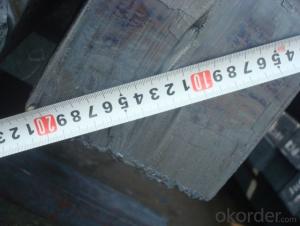Prime quality prepainted galvanized steel 685mm
- Loading Port:
- Tianjin
- Payment Terms:
- TT OR LC
- Min Order Qty:
- 100 m.t.
- Supply Capability:
- 10000 m.t./month
OKorder Service Pledge
OKorder Financial Service
You Might Also Like
Construction building material galvanized color prepainted cold
rolled steel coil
Prepainted steel sheet is coated with organic layer, which provides higher anti-corrosion property and
a longer lifespan than that of galvanized steel sheets.
The base metals for prepainted steel sheet consist of cold-rolled, HDG electro-galvanized and hot-dip
Alu-zinc coated. The finish coats of prepainted steel sheets can be classified into groups as follows:
polyester, silicon modified polyesters, polyvinylidene fluoride, high-durability polyester, etc
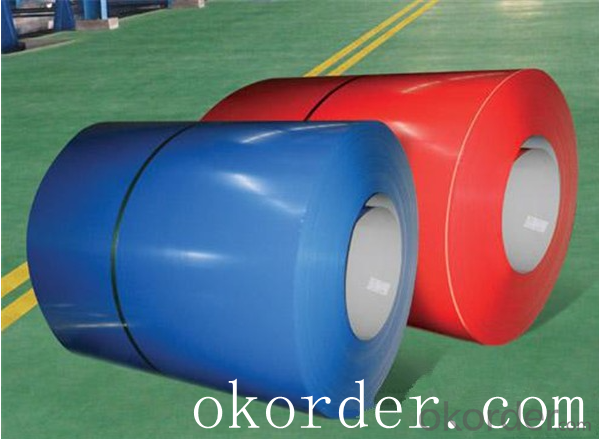
Standard and Grade :
Pre-paint galvanized steel coil | ||||
ASTM A755M-03 | EN10169:2006 | JISG 3312-2012 | ||
Commercial quality | CS | DX51D+Z | CGCC | |
Structure steel | SS GRADE 230 | S220GD+Z | CGC340 | |
SS GRADE 255 | S250GD+Z | CGC400 | ||
SS GRADE 275 | S280GD+Z | CGC440 | ||
SS GRADE 340 | S320GD+Z | CGC490 | ||
SS GRADE550 | S350GD+Z | CGC570 | ||
S550GD+Z | ||||
Application:
Outdoor | Roof, roof structure, surface sheet of balcony, frame of window, door of garage, rolled shutter door, booth, Persian blinds, cabana, etc |
Indoor | Door, isolater, frame of door, light steel structure of house, home electronic appliances, ect. |
Specifications
Commodity Name: Prepainted Galvanized Steel Coil
Standard: AISI, ASTM, DIN, GB, JIS
Grade: TDC52D+Z
Thickness 0.13-8.0mm
Width:600mm-1350mm
Zinc Coating:275g/m2
Polyester Coating Thickness:Top and Back coating thickness depend by Buyer Requirement.
Polyester Coating Type:2/2,1/2m,1/2.
Polyester Type: Polyester, silicone modified polyester, high durability polyester (HDP), polyvinylidene fluoride (PVDF)
Unit Roll Weight:5-20tons
Place of Origin Shanghai , China (Mainland)
Surface Treatment :Color Coated
Manufacture Progress:HRC-CRC-GALVANIZED-COLOR COATED
Application : Construction, electrical, transportation, steel plant, composite board plant, steel tile factory
Payment & Shipping Terms:T/T ,L/C, and FOB CHINA
Minimum Order Quantity: 25Tons
Packge Type: Moisture-proof paper inner,Steel outside,Bundle by steel rope.
Package in Container : Wood as a foot pad, wire rope reinforcement,PPGI steel coil tied together by steel rope.
- Q: How are steel billets used in the production of structural steel?
- Steel billets are a crucial component in the production of structural steel. These billets, which are essentially semi-finished steel products, serve as the starting point for the manufacturing process. The first step in making structural steel involves melting scrap steel in a furnace at extremely high temperatures. Once the steel has reached its liquid state, it is poured into molds to form billets. These molds are designed to shape the steel into a solid, rectangular shape with a consistent cross-section. Once the billets have solidified, they are then transferred to a rolling mill. Here, the billets are reheated to a specific temperature and passed through a series of rollers, which gradually reduce the billet's size and shape. This process is known as hot rolling and is essential for refining the steel's mechanical properties. The hot-rolled billets are then further processed through a variety of techniques such as forging, extrusion, or casting to create specific shapes and sizes required for structural applications. These techniques allow the billets to be transformed into beams, columns, plates, or other structural components. After the desired shape is achieved, the structural steel undergoes various treatments to enhance its strength, durability, and resistance to corrosion. This may include heat treatment, surface coating, or additional alloying elements. Finally, the finished structural steel products are used in a wide range of applications, including the construction of buildings, bridges, and infrastructure projects. The consistent size and shape of the steel billets ensure that the resulting structural steel components have the necessary strength, stability, and structural integrity to withstand the loads and stresses they will encounter in their designated roles. In summary, steel billets play a crucial role in the production of structural steel. They serve as the starting material, which is transformed through various processes into the desired shapes and sizes required for construction projects. The quality and consistency of the billets are essential in ensuring the strength and durability of the final structural steel products.
- Q: What are the different shapes available for steel billets?
- Steel billets are manufactured in various shapes to cater to the diverse needs of different industries. Some of the available shapes for steel billets include: 1. Square Billets: These billets have equal sides, forming a square shape. They find extensive use in the construction industry for manufacturing beams, columns, and other structural components. 2. Round Billets: These billets have a circular cross-section and are commonly utilized in the production of seamless pipes, tubes, and rods. They are also employed in the automotive and aerospace sectors for manufacturing various components. 3. Rectangular Billets: These billets have unequal sides, forming a rectangular shape. They are frequently used in the construction industry to manufacture frames, window profiles, and other structural elements. 4. Hexagonal Billets: Hexagonal billets have six equal sides, forming a hexagon shape. They are commonly employed in the production of bolts, nuts, and other fasteners that require a hexagonal shape for proper fitting. 5. Octagonal Billets: Octagonal billets have eight equal sides, forming an octagon shape. They are often used in the manufacturing of special components and tools that require a unique shape for specific applications. 6. Slab Billets: Slab billets have a rectangular cross-section with a larger width compared to their height. They are primarily used for producing flat-rolled steel products such as sheets, plates, and coils. 7. Bloom Billets: Bloom billets have a square or rectangular cross-section with a larger size compared to regular billets. They are commonly utilized in the production of sections, bars, and rails. The choice of steel billet shape depends on the specific requirements of the desired end product and the manufacturing process involved. The versatility of steel billets makes them suitable for a wide range of applications in various industries.
- Q: How are steel billets used in the manufacturing of tools and equipment?
- Steel billets are a vital raw material utilized in the production of tools and equipment. These billets are semi-finished metal forms, typically rectangular or square, which undergo further processing to manufacture a wide range of products. To commence, steel billets are heated and then subjected to a process known as hot rolling. This process involves passing the billets through a series of rollers, gradually reducing their thickness and shaping them into desired forms. The resulting forms can include bars, rods, sheets, or even more intricate shapes, depending on the specific requirements for the tool or equipment being produced. Once the desired shape is achieved, the steel billets undergo additional processing through various techniques such as forging, machining, and heat treatment. Forging entails applying pressure to shape the billets into specific tool components, while machining is used to refine the shape and dimensions of the parts. Heat treatment is employed to enhance the mechanical properties of the steel, increasing its strength, durability, and resistance to wear and tear. The resultant steel components are then assembled and integrated into the production of tools and equipment. These encompass a diverse range of products, including wrenches, hammers, drills, cutting tools, industrial machinery, and even large-scale equipment used in sectors such as construction and manufacturing. Steel billets are favored for tool and equipment production due to their exceptional mechanical properties. Steel is renowned for its high strength, toughness, and durability, making it an ideal material for applications requiring resistance to heavy loads, impacts, and wear. Moreover, steel can be easily machined, welded, and formed into various shapes, enabling manufacturers to create tools and equipment with intricate designs and precise dimensions. In conclusion, steel billets play a pivotal role in the production of tools and equipment. Through the processes of hot rolling, forging, machining, and heat treatment, steel billets are transformed into high-quality components that serve as the foundation for various tools and equipment. The versatility and superior mechanical properties of steel render it an indispensable material in the manufacturing industry.
- Q: How do steel billets contribute to the construction of bridges and infrastructure?
- Steel billets play a crucial role in the construction of bridges and infrastructure due to their strength, versatility, and durability. These cylindrical bars of steel are produced through a process called casting, where molten steel is poured into molds and allowed to cool and solidify. One of the primary contributions of steel billets to bridge construction is their high load-bearing capacity. Bridges are subjected to heavy loads, such as the weight of vehicles, pedestrians, and even natural forces like wind and earthquakes. Steel billets, with their exceptional strength and structural integrity, provide the necessary support to withstand these loads and ensure the safety and stability of the bridge. Furthermore, steel billets offer flexibility in design and construction. Their malleability allows them to be easily shaped and formed into various structural components, such as beams, columns, and girders, which are essential elements in bridge construction. This flexibility enables engineers to create innovative designs and optimize the use of materials, resulting in cost-effective and efficient bridge structures. Another significant advantage of steel billets is their resistance to corrosion. Bridges are constantly exposed to harsh environmental conditions, including moisture, saltwater, and pollution. Steel billets can be treated with protective coatings or alloyed with elements such as chromium or nickel to enhance their resistance to corrosion. This ensures the longevity and durability of the bridge, reducing maintenance costs and enhancing its lifespan. Additionally, steel billets contribute to the speed of bridge construction. As these billets are prefabricated in steel mills, they can be produced in large quantities and transported to the construction site, ready for assembly. This prefabrication process reduces the time required for on-site construction, minimizing disruption to traffic and reducing overall project duration. In summary, steel billets are integral to the construction of bridges and infrastructure due to their high load-bearing capacity, flexibility in design and construction, resistance to corrosion, and contribution to faster construction times. Their contribution ensures the safety, longevity, and efficiency of bridge structures, making them an essential component in the development of robust and reliable infrastructure systems.
- Q: Are steel billets used in the production of automotive parts?
- Yes, steel billets are commonly used in the production of automotive parts. Steel billets are semi-finished products that are typically used as raw materials in various manufacturing processes. They are often forged or rolled into the desired shape and size to create automotive components such as engine parts, axles, gears, springs, and chassis. Steel billets offer excellent strength, durability, and formability, making them an ideal choice for producing automotive parts that require high performance and reliability.
- Q: What are the common surface treatments for steel billets?
- Common surface treatments for steel billets include hot-dip galvanizing, electroplating, painting, and powder coating.
- Q: What is alpha carbon? What is beta carbon?
- The method of marking C is generally used in organic matter, and the C atom directly connected with the functional group is called alpha carbon.
- Q: How do steel billets contribute to the oil and gas industry?
- Steel billets are essential components in the oil and gas industry, playing a significant role in various applications. These billets are semi-finished metal products that are used as raw materials for manufacturing pipes, valves, fittings, and other equipment required in the extraction, transportation, and refining of oil and gas. One of the primary uses of steel billets in the industry is for the production of seamless pipes. These pipes are crucial for the transportation of oil and gas over long distances, as they provide a secure and reliable means of conveying these valuable resources. Steel billets are heated and then rolled into seamless pipes, which offer excellent strength, durability, and resistance to high-pressure environments. These pipes are utilized in offshore drilling, subsea pipelines, and other critical applications within the oil and gas sector. Moreover, steel billets are also utilized in the manufacturing of various valves and fittings used in oil and gas infrastructure. Valves are crucial for controlling the flow of oil and gas throughout the production and transportation processes. Steel billets are shaped into valve bodies, which are then machined to precise specifications, ensuring proper functionality and reliability. Similarly, fittings, such as couplings, elbows, and tees, are manufactured from steel billets to connect different sections of pipelines and equipment, providing a secure and leak-free system. Furthermore, steel billets contribute to the oil and gas industry by being a primary material for constructing storage tanks and pressure vessels. These tanks are used for the storage of crude oil, natural gas, and various petroleum products. Steel billets are transformed into plates, which are then welded together to form these large-scale storage containers. The inherent strength and corrosion resistance of steel make it an ideal material for such applications, ensuring the safe containment of valuable resources. In summary, steel billets are essential to the oil and gas industry as they are transformed into various components used in the extraction, transportation, and refining processes. From seamless pipes for long-distance transportation to valves, fittings, and storage tanks, steel billets provide the necessary strength, durability, and reliability required in this demanding industry.
- Q: What are the common applications of stainless steel billets?
- Stainless steel billets are widely used in various industries due to their exceptional properties and versatility. Some of the common applications of stainless steel billets include: 1. Construction: Stainless steel billets are extensively used in the construction industry for structural purposes. They are used to manufacture beams, columns, and other load-bearing components due to their high strength and corrosion resistance. 2. Automotive Industry: Stainless steel billets find applications in the automotive industry for manufacturing various components like exhaust systems, engine parts, and suspension components. The high temperature and corrosion resistance of stainless steel make it an ideal choice for these applications. 3. Aerospace Industry: Stainless steel billets are used in the aerospace industry to manufacture critical components like aircraft frames, landing gear, and engine parts. The high strength-to-weight ratio and resistance to extreme temperatures make stainless steel a preferred material in this sector. 4. Oil and Gas Industry: Stainless steel billets are widely used in the oil and gas industry due to their excellent corrosion resistance. They are used to manufacture pipes, fittings, valves, and other equipment that come in contact with corrosive fluids or gases. 5. Food Processing Industry: Stainless steel billets are extensively used in the food processing industry due to their hygienic properties and resistance to corrosion caused by food and cleaning agents. They are used to manufacture equipment like storage tanks, conveyors, and processing machinery. 6. Medical and Pharmaceutical Industry: Stainless steel billets find applications in the medical and pharmaceutical industry for manufacturing surgical instruments, implants, and equipment. The biocompatibility and sterilization capabilities of stainless steel make it suitable for these critical applications. 7. Marine Industry: Stainless steel billets are used in the marine industry for manufacturing various components like ship hulls, propellers, and fittings. The corrosion resistance of stainless steel is crucial in the harsh saltwater environment. 8. Power Generation Industry: Stainless steel billets are used in power plants for manufacturing boilers, heat exchangers, and turbine components. The high-temperature and corrosion resistance properties of stainless steel make it suitable for these demanding applications. In summary, stainless steel billets have a wide range of applications across industries due to their exceptional properties like strength, corrosion resistance, and temperature resistance. From construction and automotive to aerospace and medical sectors, stainless steel billets play a vital role in manufacturing critical components and equipment.
- Q: What are the potential applications of steel billets in the transportation industry?
- Steel billets have a wide range of potential applications in the transportation industry. They can be used to manufacture various components such as engine parts, chassis, suspension systems, and structural parts for vehicles. Additionally, steel billets can be utilized in the production of railway tracks, shipbuilding, and aerospace applications. Their high strength, durability, and versatility make them a preferred choice for ensuring the safety and reliability of transportation systems.
Send your message to us
Prime quality prepainted galvanized steel 685mm
- Loading Port:
- Tianjin
- Payment Terms:
- TT OR LC
- Min Order Qty:
- 100 m.t.
- Supply Capability:
- 10000 m.t./month
OKorder Service Pledge
OKorder Financial Service
Similar products
Hot products
Hot Searches
Related keywords
